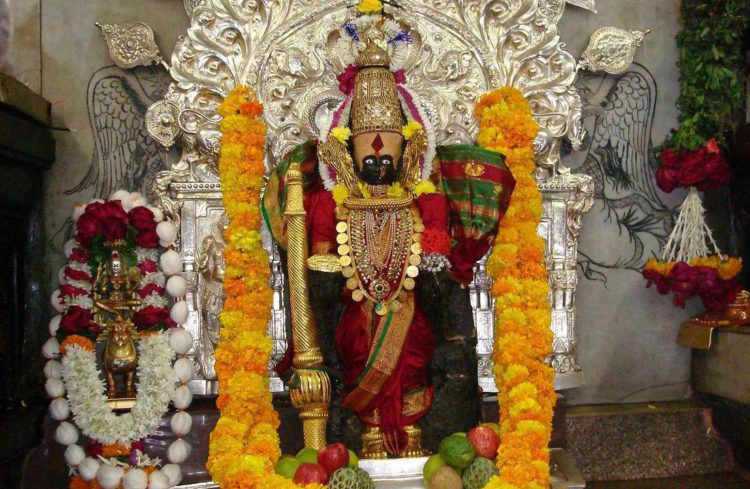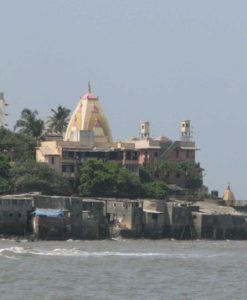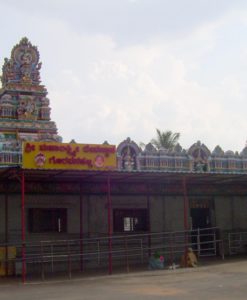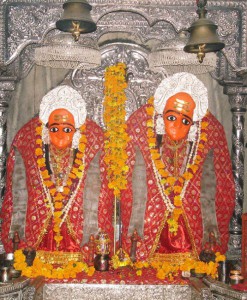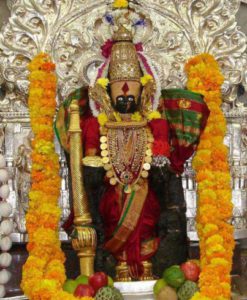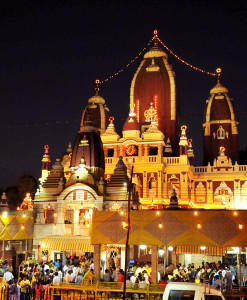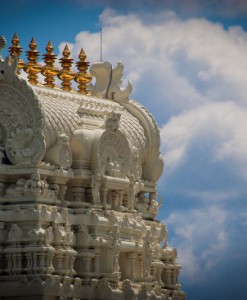No products in the cart.
Kolhapur Mahalaxmi Temple
Kolhapur Mahalaxmi Temple is one of the four Shakti Peethas of Maharashtra, the other three being Tuljapur enshrining Bhavani, Mahur enshrining Mahamaya and Renuka and Saptshringi enshrining Jagadamba. Other Shakti temples in the state are those at Ambe Jogai and Aundh.
Kolhapur is located in Kolhapur district and is well connected with Pune, 240 km north. It is on the national highway between Bangalore and Pune. It is situated on the banks of the Panchganga River and is full of ancient temples and shrines. The Kolhapur Mahalaxmi Temple is of special religious significance being one of the six places where it is believed that one can either obtain salvation from desires or have them fulfilled. The temple takes its name from Mahalaxmi, the consort of Vishnu, and it is believed that the divine couple resides in the area.
Although several parts of the Kolhapur Mahalaxmi temple are of the second half of the second millennium CE, epigraphic references place the deity in the 7th century CE, and the temple in the 10th century CE. For a period in the interim, this temple had fallen out of worship and the image of the Goddess was housed elsewhere. Worship was restored in the year 1715 after the Marathas rose to power.
The Karavira Mahatmya states that Vishnu resides in the form of Mahalaxmi at Kolhapur. Legend has it that Kolhasura, a demon that tormented the Gods and other beings, was destroyed by Mahalaxmi here at Karavira, and that the spot of his death became a thirtha and that she took abode here in a shrine which constitutes the temple today. (Legend also has it that Parvati – Kolhambika destroyed the demon Kolhasura at Trimbakeshwar).
The main entrance, Mahadwara of the Kolhapur Mahalaxmi temple is the western entrance. Upon entering the Mahadwara one is confronted with several deepamaalas on either side, and enters the Garuda mandap with square pillars and foliated arches of wood, characteristic of Maratha temples. This mandap dates back to the 18th century. An image of Garuda, the vahana of Vishnu faces the sanctum. Another stone mandap, on a raised platform enshrining Ganesh, also faces the sanctum. Following this is the mandap with three shrines facing west. The central one is that of Mahalaxmi and the two on either side are those of Mahakali and Mahasaraswati.
The Kolhapur Mahalaxmi temple complex exhibits mortarless construction echoing the style of the early Deccan temples. Also to be noted here are the horizontal mouldings and the vertical offsets which create a rich light and shade pattern. Also seen in this temple is a rich display of sculpture of figurines in dancing poses, musicians, gods and goddesses. The three sancta have rather simple shikharas of brick and mortar dating back to the 19th century.
The image of Mahalaxmi carved in black stone is 3 feet in height. The Shri yantra is carved on one of the walls in the temple. The sanctum is designed such that once a year, the setting rays of the sun fall on the face of the image of Mahalaxmi for a period of 3 days in the months of Pisces and Leo.
Above the Mahalaxmi sanctum is a shrine with a Shivalingam and a nandi. The devakoshtas house Venkatesha, Katyayani and Gowri Shankar – facing the north, east and the south. There are a number of subsidiary shrines in the courtyard to the Navagrahas, Lord Surya, Mahishasuramardini, Vitthal-Rakhmai, Shiva, Vishnu, Tulja Bhavani and others. Some of these images date back to the 11th century, while some are of recent origin. Also located in the courtyard is the temple tank Manikarnika Kund, on whose bank is a shrine to Visweshwar Mahadev.
By Road: Kolhapur is well connected by state road transport and private bus services. Regular bus services are available from Pune. Super-fast and Deluxe A/C buses are also available on this route. Private buses are also available. It is on the national highway between Bangalore and Pune.
By Rail: The nearest railhead is kolhapur railway station and is connected to Ahmedabad, Bangalore, Mysore, Baroda, Surat, Delhi, Mumbai, Pune, Nagpur, Sangli-Miraj and Goa by express trains.
By Air: Kolhapur airport is the closes airport. After reaching airport local and MSRTC buses, Auto rickshaws and Taxis are available to reach the Temple.
Mahalaxmi Temple, Kolhapur, Maharashtra
Five worship services are offered each day at the Kolhapur Mahalaxmi temple. The first one is at 5 am, and it involves the waking of the deity with a Kakada – torch, to the accompaniment of hymns. The second worship service at 8 am involves the offeirng of the Shodashopachara pooja consisting of 16 elements. The afternoon and evening services and the Shejaarati pooja constitute the three other services. A festival image of the deity is taken out in procession around the temple courtyard each Friday, and on full moon days.

